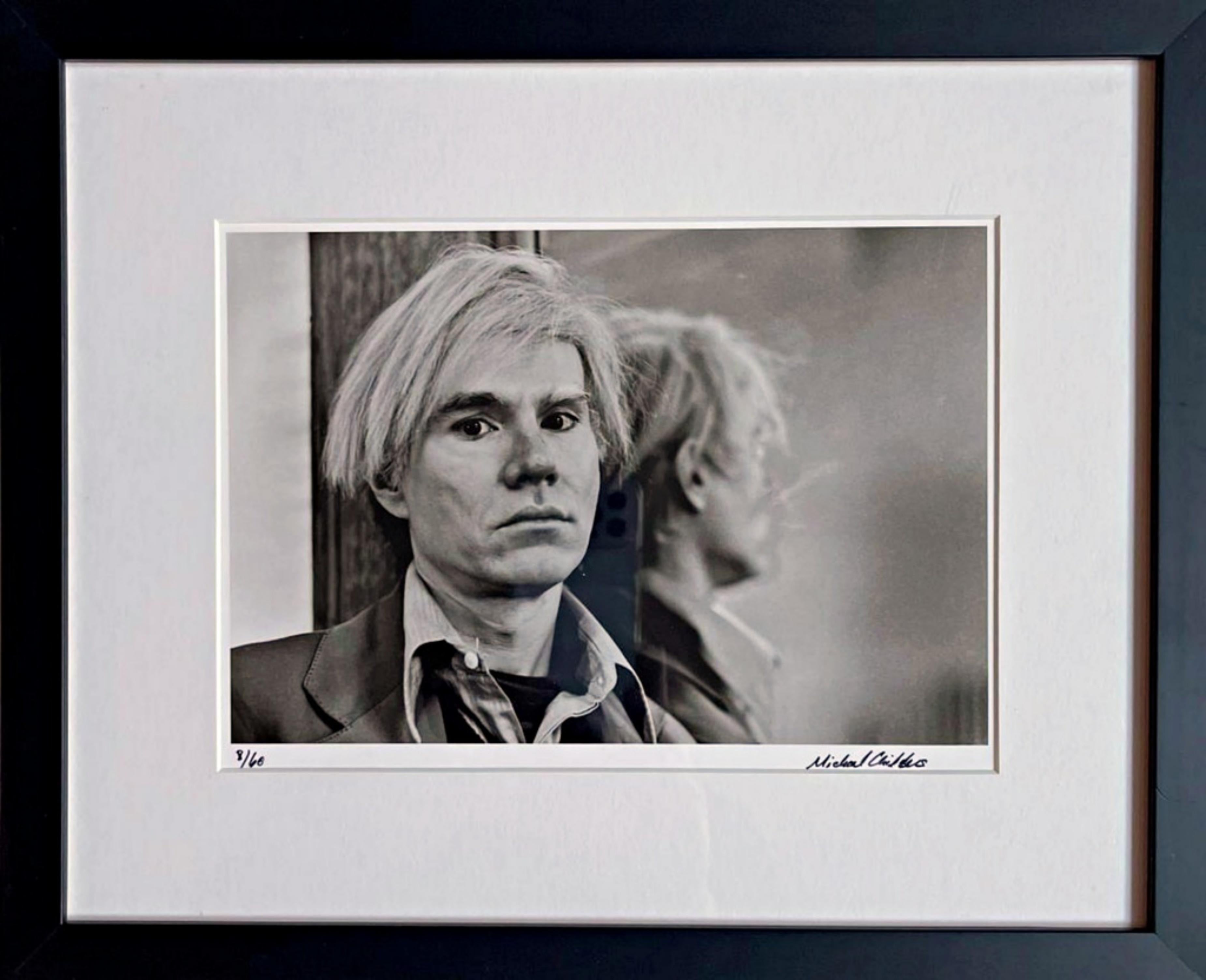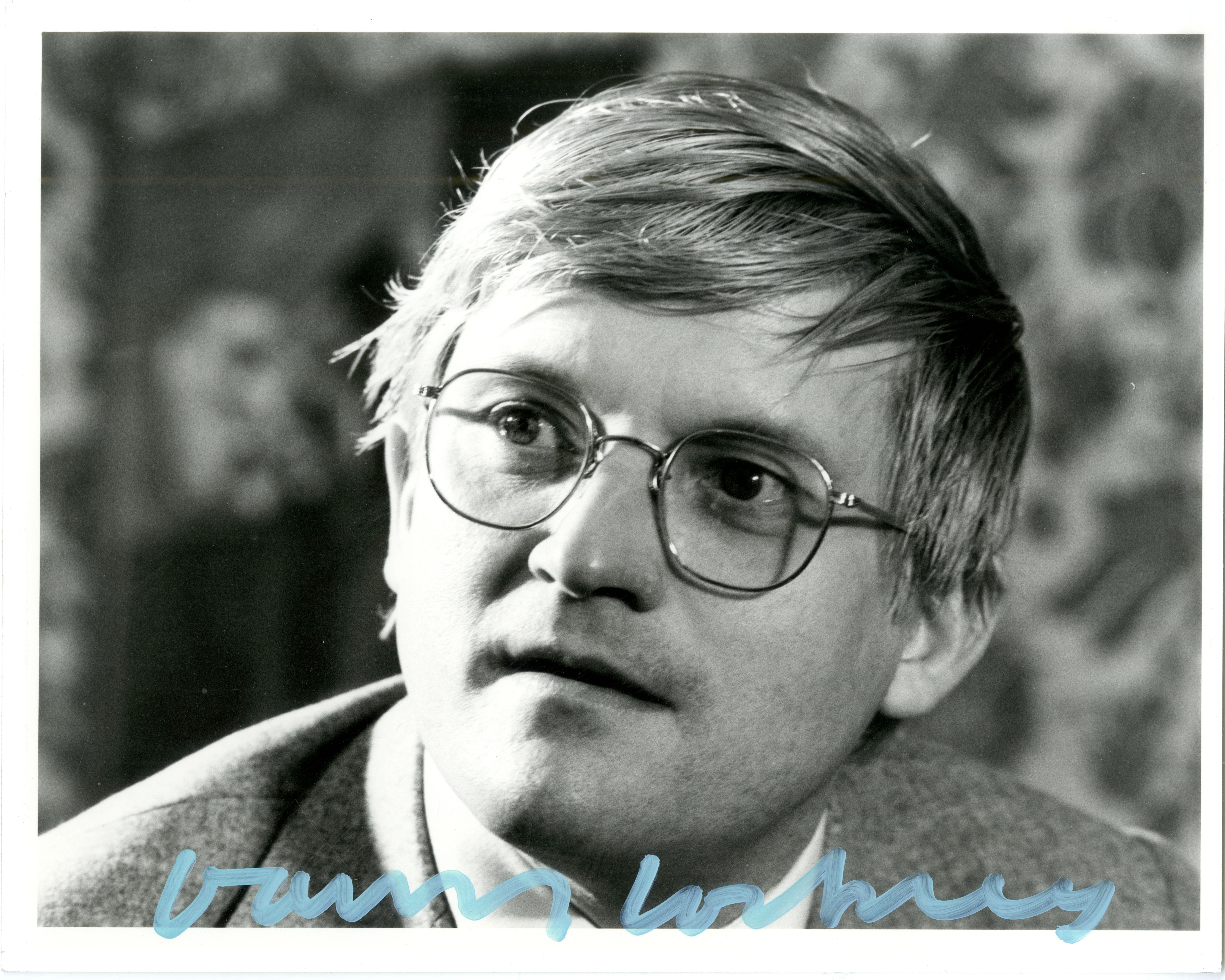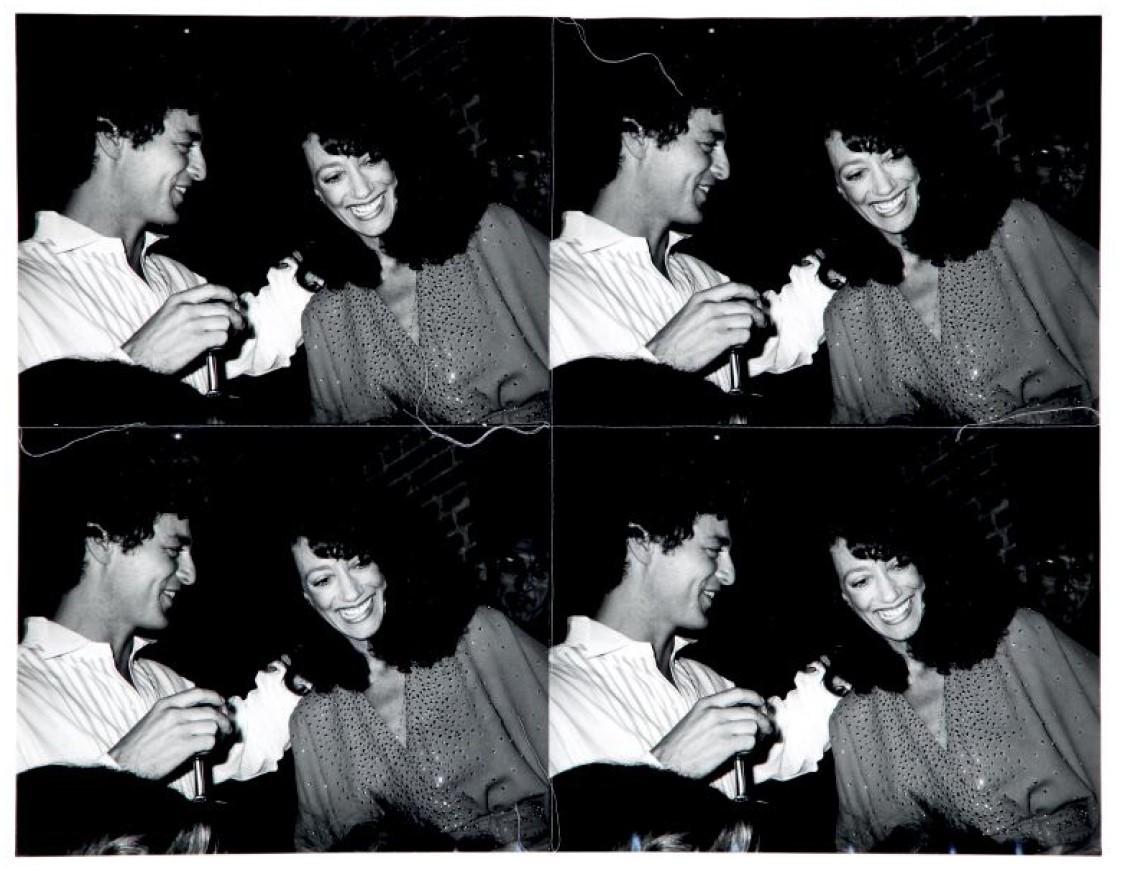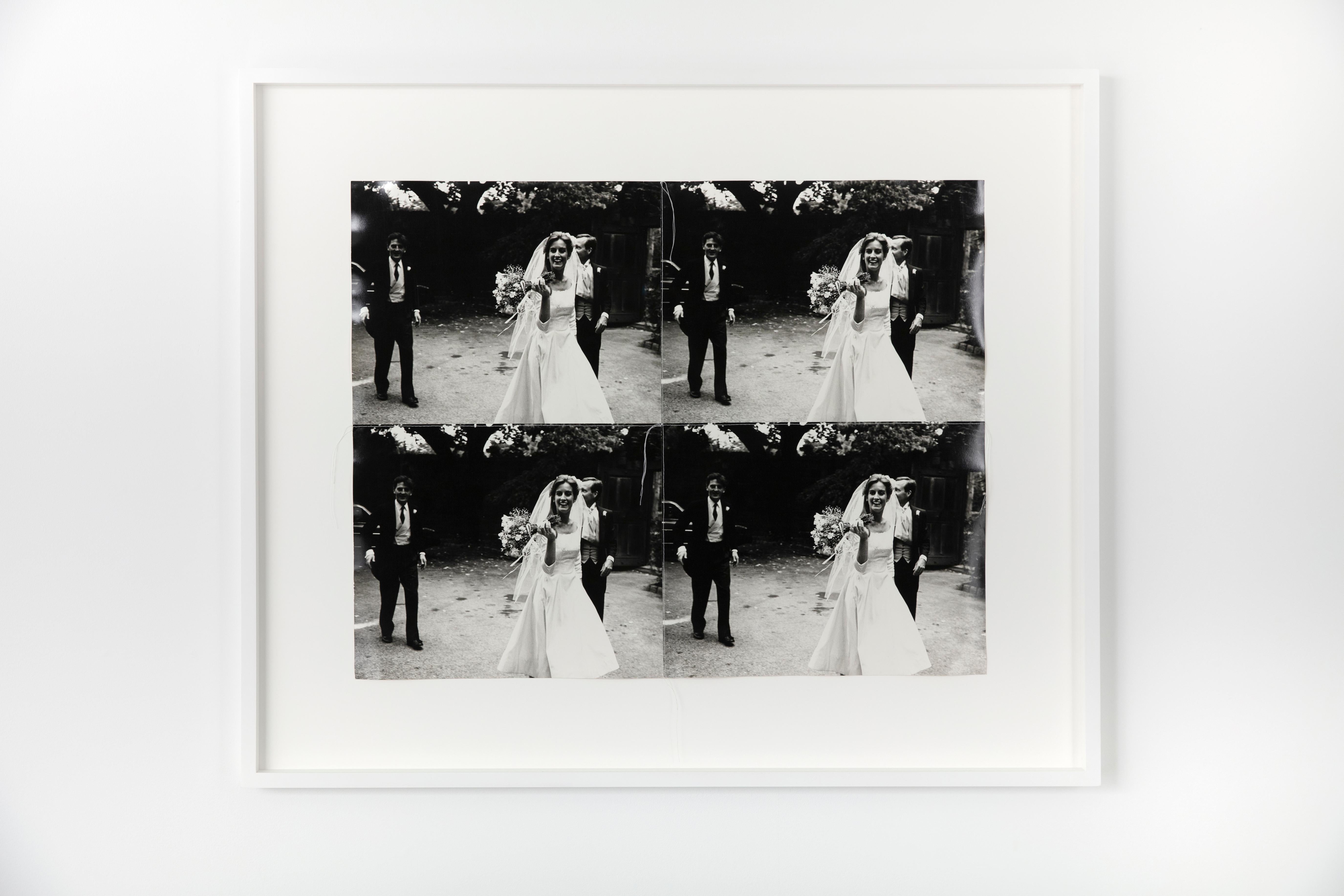Items Similar to Madonna NYC '83 (hand signed and numbered 1/1 on both the front and the back)
Video Loading
Want more images or videos?
Request additional images or videos from the seller
1 of 12
Richard CormanMadonna NYC '83 (hand signed and numbered 1/1 on both the front and the back)2010
2010
About the Item
Richard Corman
Madonna NYC '83 (hand signed and numbered 1/1 by the photographer on the front and the back), 2010
Black and white photographic print on archival pigment paper
Hand signed, titled and numbered 1/1 on the front as well as the back (signed twice)
Frame included: framed in a museum quality black wood frame with UV plexiglass
Madonna '83 is a 36 square inch photograph on archival pigment paper, numbered 1 of 1 by the legendary photographer Richard Corman, who began his career as Richard Avedon's apprentice. The work is signed, titled and numbered 1/1 (unique) on both the front of the photograph, as well as the back of the frame.
It is elegantly framed in a museum quality black wood frame with UV plexiglass.
Measurements:
Frame:
37.5 x 37.5 x 2 inches
Photograph:
35.5 x 35.5 inches
This photograph was taken during Richard Corman's historic photoshoot with Madonna in the early 1980s, and it was reprinted in 2010. Richard Corman's famous photographs of Madonna during that period have been reproduced in books, magazines, tv clips and newspapers - and are considered the most iconic images ever taken of Madonna. We are incredibly honored to be exclusively offering this iconic photograph for the very first time -- in honor of Madonna's 65th birthday.
Here, Madonna is just a natural beauty, youthful, confident, vulnerable, natural, and extraordinarily poised. The photograph was taken while she was on the cusp of superstardom, but still anxious, striving, going on casting calls, and waiting for her big break. As Richard Corman explains, she is shown sitting amidst the rubble of the back yard of her Lower East side apartment.
In his own words, photographer Richard Corman describes how this famous sitting came about:
My mother was Cis Corman, a renowned casting director in New York City. In the summer of 1982 she was casting The Last Temptation of Christ for Martin Scorsese and called me to say they had just tested a girl for the part of the Virgin Mary. She said, “You must meet this girl — she’s an original.” I was 28 and had just finished an apprenticeship with Richard Avedon and was looking for interesting people to shoot. So I got this girl’s number and called. It was Madonna. At the time she was living in Alphabet City [Lower East Side of Manhattan], and she suggested I go to her apartment and chat about what I wanted to do. I had to call her from a phone booth across the street, because the neighborhood was full of drug dealers, and they didn’t let people just walk in and out. There was a group of kids outside the building, on the stoop, in the hallways, and when I said I was there for Madonna the seas parted. I looked up the staircase, and I saw this girl leaning over the edge of the banister, and even from three stories below I could see these catlike eyes just looking down. I knew at that moment that she had something special — I really did. She had her best friend and neighbor, Martin, with her — he later died of AIDS—and we sat and talked. She served me a cup of coffee on a silver tray with three pieces of Bazooka bubblegum. There was no pretense to it. When I came back a few days later to shoot her, she said, “You know, we should go up to the roof because I go up there with all the kids from the building.” She was like the Pied Piper of the neighborhood — they loved her. They followed her, they danced with her, they sang with her. It was something they did on a daily basis, and it was remarkable. We just walked up and they gathered around. She put the boom box on — it was her music, though I don’t remember which song — and they just started dancing and singing. She was so alive and unpretentious. She was fierce, determined. Nothing was going to stop her.
After we came down from the rooftop, we walked through the neighborhood, laughing and chatting, stopping in front of a storefront that you see in one of the shots, stopping in front of a senior citizen’s home and hanging out with the old folks. For me, like her, when I do a shoot now, I’ve got eight people around me — but that day it was just the two of us. I would shoot her a couple more times, once for the campaign for Vision Quest, with Matthew Modine and Linda Fiorentino. It was a hot coming-of-age film about wrestling in the Northwest, and she was the singer in the little bar that some of these teenagers would hang out in. By then Madonna was becoming hot and big, and — in the nicest way — she would go to whoever would help her and move her ahead. I was that person to begin with because of the connection to my mother. But as soon as she had that rocket to fame she was off to the next stage. That’s when Herb Ritts started photographing her exclusively, but that early period of the ’80s was amazing. I was photographing Basquiat and Keith Haring, and just to be part of all that took your breath away. People were truly taking chances. It was just a different energy, and Madonna was the focal point for a lot of that.
For fans and followers of Madonna, snag this now while we still have it, and while it's still available.
About Richard Corman:
While Richard Corman’s photography varies widely in subject matter, it is always intensely focused on the infinitely varied expressions of the human spirit. Ken Burns, documentarian and director, describes Richard’s work as:
"Artistic vision dedicated to the highest aspirations of human endeavor...
the photographs record in big moments and small, among the famous
and ordinary, the gifted and challenged, larger truths relevant to all of us."
As a portrait photographer, Corman has worked with a thrilling breadth of subjects from Nobel Peace Prize recipients Nelson Mandela and Elie Wiesel to esteemed actors at the top of their profession such as Robert De Niro, Phillip Seymour Hoffman, and Meryl Streep. In addition to his work with those already acknowledged for their accomplishments, Corman has the unique ability to see the compelling gifts in yet to be celebrated young artists. This has led him to working relationships with Madonna, Jean Michel Basquiat and Keith Haring as each was on the cusp of showing to the world what Richard had already captured.
Richard has worked with elite athletes who inspire greatness, like Michael Jordan, Jackie Joyner-Kersee and Muhammad Ali. Beyond the physical prowess and beauty of the athletes, Richard has been able to capture the spirit of determination and dedication that is at each of their cores.
Some of the best-loved musicians of our time have worked with Corman, including Sting, Wynton Marsalis and Barbra Streisand. Richard’s gift for generating trust and openness with his subjects has extended to his portraits of writers, visual artists and dancers, who epitomize the best of their art, such as Kurt Vonnegut, Isamu Noguchi and Misty Copeland.
Richard is driven to find and capture an essential image of great spirits and great talent. Throughout his career, he’s been fortunate and honored to find them at all stages of the arc of their career.
Richard’s desire to capture the beauty of the human spirit extends beyond the commercial and entertainment worlds. Humbling experiences with many socio-cultural projects and non-profit organizations have translated into an extensive portfolio of indelible images. Most notable is his personal and profoundly compassionate work with the Special Olympics. Richard has traveled the world photographing these inspiring athletes for over two decades.
Richard has found great fulfillment in his work with the Wounded Warrior Project, American Association for Cancer Research, Amnesty International, United Way, Michael J. Fox Foundation for Parkinson's Research, The ACLU, Christopher Reeve and Dana Reeve Foundation, March of Dimes and Muhammad Ali's Parkinson's Center.
The photography world has embraced his published books and limited edition fine art prints.
Richard, a native New Yorker, is inspired daily by the creative energy in New York City. Richard has a degree in Art History and Psychology from Hunter College. In addition, he spent two years apprenticing with Richard Avedon early in his career, and assisting him on the American West project. That time continues to influence Richard's work.
- Creator:Richard Corman (1954, American)
- Creation Year:2010
- Dimensions:Height: 37.5 in (95.25 cm)Width: 37.5 in (95.25 cm)Depth: 2 in (5.08 cm)
- Medium:
- Movement & Style:
- Period:
- Condition:Ships framed.
- Gallery Location:New York, NY
- Reference Number:1stDibs: LU1745213315482
Richard Corman
While Richard Corman’s photography varies widely in subject matter, it is always intensely focused on the infinitely varied expressions of the human spirit. Ken Burns, documentarian and director, describes Richard’s work as: "Artistic vision dedicated to the highest aspirations of human endeavor... the photographs record in big moments and small, among the famous and ordinary, the gifted and challenged, larger truths relevant to all of us." As a portrait photographer, Corman has worked with a thrilling breadth of subjects from Nobel Peace Prize recipients Nelson Mandela and Elie Wiesel to esteemed actors at the top of their profession such as Robert De Niro, Phillip Seymour Hoffman, and Meryl Streep. In addition to his work with those already acknowledged for their accomplishments, Corman has the unique ability to see the compelling gifts in yet to be celebrated young artists. This has led him to working relationships with Madonna, Jean Michel Basquiat and Keith Haring as each was on the cusp of showing to the world what Richard had already captured. Richard has worked with elite athletes who inspire greatness, like Michael Jordan, Jackie Joyner-Kersee and Muhammad Ali. Beyond the physical prowess and beauty of the athletes, Richard has been able to capture the spirit of determination and dedication that is at each of their cores. Some of the best-loved musicians of our time have worked with Corman, including Sting, Wynton Marsalis and Barbra Streisand. Richard’s gift for generating trust and openness with his subjects has extended to his portraits of writers, visual artists and dancers, who epitomize the best of their art, such as Kurt Vonnegut, Isamu Noguchi and Misty Copeland. Richard is driven to find and capture an essential image of great spirits and great talent. Throughout his career, he’s been fortunate and honored to find them at all stages of the arc of their career. Richard’s desire to capture the beauty of the human spirit extends beyond the commercial and entertainment worlds. Humbling experiences with many socio-cultural projects and non-profit organizations have translated into an extensive portfolio of indelible images. Most notable is his personal and profoundly compassionate work with the Special Olympics. Richard has traveled the world photographing these inspiring athletes for over two decades.
About the Seller
5.0
Platinum Seller
These expertly vetted sellers are 1stDibs' most experienced sellers and are rated highest by our customers.
Established in 2007
1stDibs seller since 2022
291 sales on 1stDibs
Typical response time: 1 hour
- ShippingRetrieving quote...Ships From: New York, NY
- Return PolicyA return for this item may be initiated within 1 day of delivery.
More From This SellerView All
- Andy Warhol in New York, 1976, 2007, hand signed photograph 8/60 for MuseumBy Michael ChildersLocated in New York, NYMichael Childers Andy Warhol in New York, 1976, 2007 Photographic print Signed and numbered 8/60 on the front in black felt tip marker Frame included ...Category
Early 2000s Pop Art Black and White Photography
MaterialsPhotographic Paper, Permanent Marker
- Andy Warhol in Paris with Sitting Bird 1976 signed photo Palm Springs Art MuseumBy Michael ChildersLocated in New York, NYMichael Childers Andy Warhol in Paris with Sitting Bird 1976, 2007 Photographic print hand signed in black felt tip pen lower right front; the back be...Category
1970s Pop Art Black and White Photography
MaterialsPhotographic Paper, Permanent Marker
- Photograph taken of the artist (hand signed by David Hockney)By David HockneyLocated in New York, NYDavid Hockney Photograph taken of the artist (hand signed by David Hockney), ca. 1981 Black and white photograph Boldly signed in blue grease marker on the lower front 8 × 10 inches ...Category
1980s Realist Portrait Photography
MaterialsC Print, Permanent Marker
- Ivan KarpBy Andy WarholLocated in New York, NYAndy Warhol Portrait of Ivan Karp, ca. 1975 Acetate negative acquired directly from Chromacomp, Inc. Andy Warhol's printer in the 1970s. Accompanied by a Letter of Provenance and Au...Category
1970s Pop Art Black and White Photography
MaterialsPhotographic Paper
- Portrait of Andy Warhol, hand signed by BOTH Andy Warhol and Christopher MakosLocated in New York, NYChristopher Makos, Andy Warhol Portrait of Andy Warhol taken by photographer Christopher Makos (Hand signed by BOTH Andy Warhol and Christopher Makos), 1986 Gelatin Silver Print, hand signed and annotated by Andy Warhol, Hand signed by Christopher Makos with studio stamp and copyright Hand signed and annotated "Xtra" by Andy Warhol; hand signed, dated and stamped by Christopher Makos with copyright Frame included: elegantly framed in a museum quality wood frame with UV plexiglass; there is a die cut window on the back to reveal the signatures, annotations and copyright stamp A rare proof hand signed by both photographer and subject: Hand signed and annotated "Xtra" by Andy Warhol on the back; hand signed, dated and stamped by Christopher Makos with this copyright Measurements: Frame: 19 x 16.75 x 1.75 inches Photograph: 12.25 x 10.25 inches About Christopher Makos: Christopher Makos was born in Lowell, Massachusetts, grew up in California, and moved to New York after high school. He studied architecture in Paris and briefly worked as an apprentice to Man Ray. Andy Warhol, Makos' good friend and frequent portrait subject, called Makos "the most modern photographer in America." His photographs have been exhibited in galleries and museums such as the Guggenheim Museum in Bilbao, the Tate Modern in London, the Whitney Museum of American Art in New York, the IVAM in Valencia (Spain) and the Reina Sofia Museum in Madrid. His pictures have appeared in magazines and newspapers, including Paris Match and Wall Street Journal. He is the author of several important books, like the volumes Warhol/Makos In Context (2007), Andy Warhol China...Category
1980s Pop Art Black and White Photography
MaterialsSilver Gelatin, Pencil
- Marcel ProustBy Andy WarholLocated in New York, NYAndy Warhol Marcel Proust, ca. 1976 Acetate positive acquired directly from Chromacomp, Inc. Andy Warhol's printer in the 1970s. Accompanied by Letter of Provenance from the representative of Chromacomp, Andy Warhol's printer Frame included: Elegantly framed in a museum quality white wood frame with UV plexiglass. Measurements: Frame: 17.75 x 14.75 x 1.5 inches Photograph: 10.75 x 7.75 inches This unique photographic positive acetate is of the 19th and early 20th century French novelist Marcel Proust, who's chef d'oeuvre A la recherche du temps perdu inspired some Warhol titles. Warhol would transfer the acetate to a transparency, allowing an image to be magnified and projected onto a screen. Warhol created a silkscreen painting of Marcel Proust and sent this acetate to his printer, Chromacomp, Inc. for consideration as a silkscreen multiple, which was never made. This acetate was brought by Warhol to Eunice and Jackson Lowell, owners of Chromacomp,Inc. a fine art printing studio in New York City. During the 1970s and 1980s, it was the premier atelier for fine art limited edition silkscreen prints; indeed, Chromacomp was the largest studio producing fine art prints in the world for artists such as Andy Warhol, Leroy Neiman, Erte, Robert Natkin, Larry Zox, David Hockney and many more. All of the plates were done by hand and in some cases photographically. Warhol had considered creating limited edition prints with Chromacomp of his famous portrait of Proust based upon this photographic image. The original painting was commissioned by art dealer Marie-Louise Jeanneret for a group of Italian collectors and avid Proust enthusiasts, Warhol's original four acrylic and silkscreen ink on linen works were based on a famous 1895 photograph of the French novelist captured by Otto Wegener. Marcel Proust, the distinguished French novelist, literary critic, and essayist, achieved renowned for his monumental 1908 seven-volume novel In Search of Lost Time. The literary masterpiece delved into the intricacies of memory, time and the profound complexity of the human experience. Proust's literary genius revolutionized the landscape of literature, leaving an enduring impact on the Parisian cultural scene at the turn of the century. About 50 years later, Andy Warhol emerged as a visionary artist who challenged artistic conventions, exploring themes that resonated with Proust's own ideas. Warhol, a trailblazer in his own right, delved into philosophical reflections on consumerism, mass production and the nature of fame. His artistic endeavors mirrored Proust's explorations, albeit through a contemporary lens, as he sought to redefine the boundaries of art and popular culture. About Andy Warhol: Isn’t life a series of images that change as they repeat themselves? —Andy Warhol Andy Warhol’s (1928–1987) art encapsulates the 1960s through the 1980s in New York. By imitating the familiar aesthetics of mass media, advertising, and celebrity culture, Warhol blurred the boundaries between his work and the world that inspired it, producing images that have become as pervasive as their sources. Warhol grew up in a working-class suburb of Pittsburgh. His parents were Slovak immigrants, and he was the only member of his family to attend college. He entered the Carnegie Institute of Technology (now Carnegie Mellon University) in 1945, where he majored in pictorial design. After graduation, he moved to New York with fellow student Philip Pearlstein and found steady work as a commercial illustrator at several magazines, including Vogue, Harper’s Bazaar, and the New Yorker. Throughout the 1950s Warhol enjoyed a successful career as a commercial artist, winning several commendations from the Art Directors Club and the American Institute of Graphic Arts. He had his first solo exhibition at the Hugo Gallery in 1952, showing drawings based on the writings of Truman Capote; three years later his work was included in a group show at the Museum of Modern Art for the first time. The year 1960 marked a turning point in Warhol’s prolific career. He painted his first works based on comics and advertisements, enlarging and transferring the source images onto canvas using a projector. In 1961 Warhol showed these hand-painted works, including Little King (1961) and Saturday’s Popeye (1961), in a window display at the department store Bonwit Teller; in 1962 he painted his famous Campbell’s Soup Cans, thirty-two separate canvases, each depicting a canned soup of a different flavor. Soon after, Warhol began to borrow not only the subject matter of printed media, but the technology as well. Incorporating the silkscreen technique, he created grids of stamps, Coca-Cola bottles, shipping and handling labels, dollar bills, coffee...Category
1970s Pop Art Black and White Photography
MaterialsPhotographic Film
You May Also Like
- Andrew Unangst 'Archival Portrait of Andy Warhol' Photographic Print, 1985/2017By Andrew UnangstLocated in New York, NYThe archival ‘Portrait of Andy Warhol’ in black and white is a large-scale photographic pop-art print. This print is an edition of 15 and the photo was taken in 1985 by photographer ...Category
2010s Pop Art Black and White Photography
MaterialsArchival Ink, Archival Paper, Archival Pigment
- Four stitched gelatin silver prints Marisa Berenson and Richard GolubBy Andy WarholLocated in Santa Monica, CA"Between 1982 and 1987 Andy Warhol produced several hundred works each comprising several identical photographs stitched together with thread. At the edges of the work excess thread ...Category
1980s Pop Art Black and White Photography
MaterialsSilver Gelatin
- Four stitched gelatin silver prints of Wedding of James Copley's BrotherBy Andy WarholLocated in Santa Monica, CA"Between 1982 and 1987 Andy Warhol produced several hundred works each comprising several identical photographs stitched together with thread. At the edges of the work excess thread ...Category
1980s Pop Art Portrait Photography
MaterialsSilver Gelatin
- Abbie Hoffman photograph, Detroit 1960sBy Leni SinclairLocated in NEW YORK, NYAbbie Hoffman photograph by Leni Sinclair Set in Ann Arbor, MI, 1969, this rare, classic image of a young Abbie Hoffman was captured by none other than,...Category
1960s Pop Art Black and White Photography
MaterialsInkjet
- Bianca Jagger - Birthday Party at Studio 54By Andy WarholLocated in Santa Monica, CAThis work is unique. Stamped twice on the reverse by both The Estate of Andy Warhol and The Andy Warhol Foundation for the Visual Arts. The Andy Warhol Foundation for the Visual Arts...Category
1970s Pop Art Black and White Photography
MaterialsSilver Gelatin
- Self-PortraitBy Andy WarholLocated in Santa Monica, CAThis work is unique. Stamped twice on the reverse by both The Estate of Andy Warhol and The Andy Warhol Foundation for the Visual Arts. The Andy Warhol Foundation for the Visual Arts...Category
1980s Pop Art Black and White Photography
MaterialsSilver Gelatin
Recently Viewed
View AllMore Ways To Browse
Robert Joyner
Ken Burns
Fox Tray
Used Dior Jordan 1
Edward S Curtis Books
Amy Jones
Liam Steven
Mickey Avalon
Rue Aubriot
William Wegman L Photography
Black And White Print Photography
White Womens
French Artist Black White
Heritage Stamps
Black White Cats
Black Jazz
Vintage Photos Of Scotland
Photography Poster Black And White






